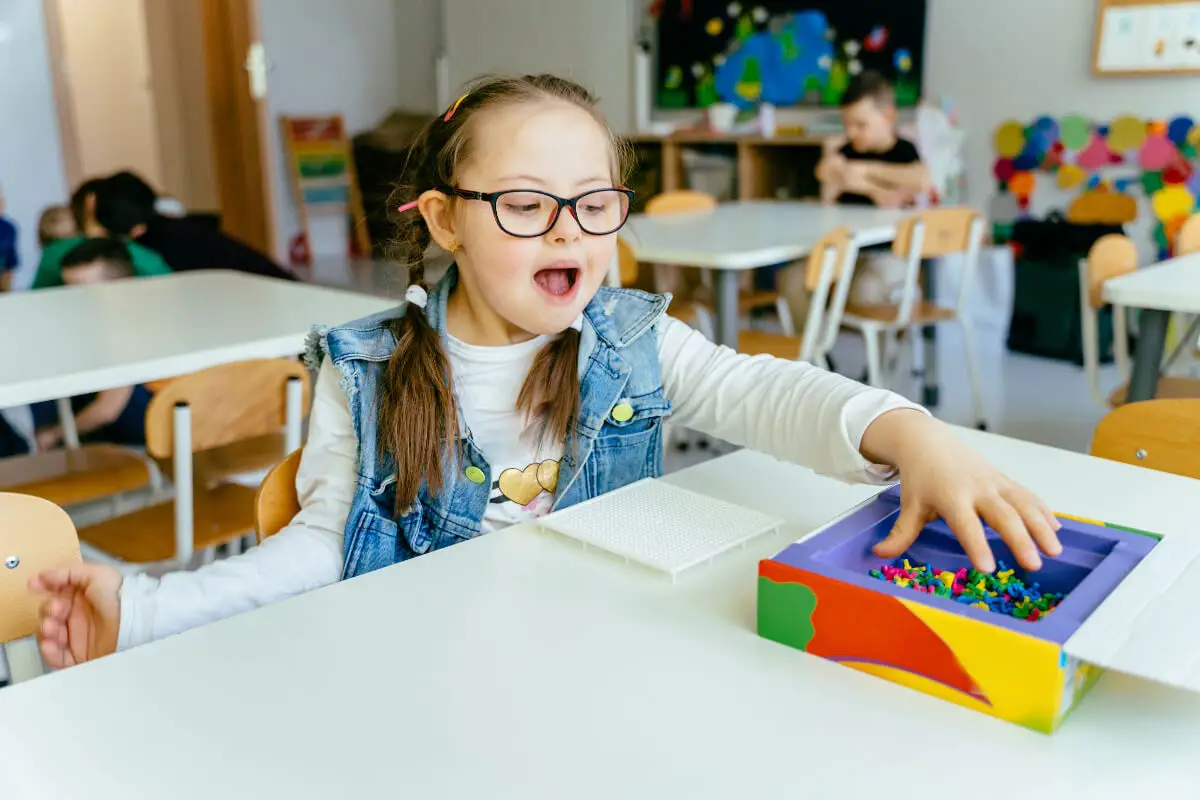As the pages turn on American history, the striving journey of integration in our education system reveals itself as a compelling testament to social progress. Echoing the spirit of Brown v. Board of Education, efforts towards achieving integrated schools have been immense and bitterly challenged, forming a tumultuous narrative that continues today.
In the face of demographic shifts, altered school district policies, and persistent inequalities, unraveling the factors that influence integration in American schools is crucial. Equally important is to delve into the mental and societal implications of school integration and ponder over suitable pathways to bolster integration in American education for a mutual, enriching experience for all.
Table of Contents
- Historical Evolution of Integration in American Schools
- Current State of Integration in American Schools
- Social and Psychological Implications of School Integration
- Future Pathways for School Integration
- Related Content:
Historical Evolution of Integration in American Schools
Few facets of American society underscore the figurative melting pot of the nation’s diversity as the public schooling system does. A cornerstone of American life, the trajectory of school integration continues to be an essential dialogue, marked by the tumultuous evolution through landmark Supreme Court decisions, citizen-led initiatives, and sociopolitical turbulence.
A vast academic canvas is painted, a testament to the profound changes that have occurred and continue to happen in the realm of school integration in America.
The starting line is the era of legally sanctioned racial segregation, a time when the “separate but equal” doctrine, upheld in Plessy v. Ferguson in 1896, essentially fortified racial divides in American public schools. States were authorized to establish racially segregated schools as long as the institutions provided equal opportunities to both races.
Then, in 1954, the watershed moment arrived: Brown v. Board of Education. This Supreme Court decision declared school segregation unconstitutional, highlighting that ‘separate educational facilities are inherently unequal.’
Grounded in the principle of equal protection under the law, this ruling marked a significant shift towards systemic integration. It started a long, uphill journey to eradicate the vestiges of institutionalized racism.
The Brown v. Board of Education decision was groundbreaking, yet not universally welcomed. Various states balked at compliance and enacted a series of ‘massive resistance’ policies to impede desegregation. It took subsequent legal advocacy, societal shifts in attitudes, and federal enforcement of desegregation orders to deviate from this resistance.
By the 1970s and 198ed, it was further influenced by Supreme Court rulings like Swann v. Charlotte-Mecklenburg Board of Education, which endorsed busing to achieve integrated school districts.
However, this progressive trend did not secure firm roots. From the 1990s onwards, there has been an unsettling ‘resegregation’ movement that has driven schools back towards racial isolation. This trend is attributed to factors like the rollback of busing policies, changing neighborhood demographics, and increased school choice options that facilitate self-segregation.
Presently, the path toward shattering stubborn barriers to socioeconomic and racial integration is beset with complications. The multifaceted structure of the American school system, fractured along the lines of race, class, and geography, presents a challenging academic landscape that is simultaneously reflective of the nation’s demographic plurality and systemic inequality.
Progressing forward necessitates taking lessons from this enlightening history of integration in American schools. As the dialogue on integration continues, it’s crucial to strike a balance that caters to diversity while promoting equal opportunities.
Herein lies the dynamic problem of integration in American schools, a sprawling analysis of the past, a scrutinizing evaluation of the present, and an optimistic vision for the future.
Current State of Integration in American Schools
In the aftermath of a chronological dissection of American school segregation and the landmark advancement of integration, the current landscape, albeit reformed in numerous aspects, persistently reflects elements of educational disparity and division.
The manifestations of integration in today’s context thus cannot be construed in isolation of concurrent societal and policy shifts.
Present-day segregation in schools operates less on the grounds of explicit legaenforcementts and more based on socioeconomic inequality, disparities that have significant overtones of racial and ethnic consolidation.
This form of segregation, marked mainly by a district or neighborhood’s economic conditions, births’ enclaves’ or high-poverty schools, thereby producing a de facto segregation, albeit with considerably different contours than the segregation of the mid-20th century.
One of the most striking features of the modern era is the role of charter schools in shaping integration patterns. Traditionally offering an alternative to the public school system and often hinging on thematic areas of instruction, their distribution patterns oscillate.
Certain charter schools reflect a high degree of racial or ethnic concentration and largely culminate in a clustered demographic. In contrast, others prioritize diverse enrolments and thus contribute to the larger integration agenda.
It also becomes necessary to consider the simultaneous rise of the ‘school choice’ movement in assessing present-day integration. This movement, built around the argument of providing parents with alternate education providers for their children, substantially undercuts integration due to its ability to amplify residential and income-related disparities.
By granting parents the leverage to pick schools physically distant from their residences, school choice inadvertently creates barriers for low-income families, thereby promoting segregation.
The objective here is not a call for a return to the mass busing policies of the 1970s but an acknowledgment of the nuanced labyrinth of the present-day American school system. Bro, a sweeping thought of integration in American schools might yield images of triumph over past prejudices.
Yet, upon closer examination, a contrasting reality underlines the need for thoughtful policy action and continuous academic research.
It becomes crucial to disentangle the complex ties between socioeconomic status, race, and quality of education. This requires considering integration a continual endeavor, not a contemporary or entirely conquered milestone.
The responsibility rests not merely on policymakers but on all of the academia to constantly redefine and measure integration succession in American schools. It speaks volumes of the inherent complexity in managing a diverse and delicately balanced democratic unit, a task that continues to be as demanding as necessary.

Social and Psychological Implications of School Integration
Switching gears from the historical and constitutional dispositions of school integration, it becomes pivotal to delve into the constructs of the human mind and societal structures that interact in the picture of school integration.
The undertaking is twofold: understanding the psychological implications that pertain to individual minds, especially developing ones, and examining the broader societal implications of integrating schools.
From a psychological standpoint, integrated schools provide diverse early exposure. A broadening of the social horizon, if you may. Children are not born with bias or prejudice.
These unfortunate tendencies are, more often than not, learned responses. In an integrated school environment, children can learn, play, and grow with peers of different racial, ethnic, and socioeconomic backgrounds.
In doing so, they develop a remarkable understanding of cultural diversity and intrinsic respect for difference, as opposed to fear or hostility. Research has shown that these exposures augment cognitive and social-emotional development and prepare them better for a globalized society.
Moreover, segregated schools inadvertently create echo chambers, fostering a homogenous perspective. This lack of differing viewpoints can stun the development of t critical thinking, an ability that becomes vital later in life. Diverse classrooms promote intellectual curiosity, enhancing problem-solving skills and creative thinking – highly valued in today’s ever-changing world.
On a societal level, integrated schools foster a more harmonic social fabric. They naturally bridge understanding between different cultural, racial, and socioeconomic groups, often dismantling damaging stereotypes that can lead to societal discord.
In a more integrated setting, there is room for dialogue, shared experiences, and empathy, fostering an ethos of mutual respect and cooperative effort. The ripple effects of such environments often restructure societal norms and bridge social divides.
Moreover, by enabling equitable distribution of resources, integrated schools can be the harbinger of socioeconomic mobility, slowly eradicating the long-standing educational disparities plaguing our society. In the long term, such shifts could aid in reducing income inequality – a growing concern in American society.
However, it behooves us to acknowledge that the road to successful integration is far from straightforward. Iy demands the dismantling of hardened racial and socioeconomic boundaries and necessitates an equitable reallocation of resources, an overhaul of systemic biases, and a sustained commitment to upholding the fundamental tenets of diversity and equality.
At the same time, resistance to change is a natural human characteristic, ic and the transition toward integrated schools will undoubtedly face challenges.
Despite these hurdles, one cannot underscore the collective benefits that integrated schools potentially bestow on communities. These benefits can potentially alter society’s very fabric towards inclusivity.
Manifestation of these benefits, however, will require strategic, evidence-based policymaking rooted in modern policy-making research and ongoing educational dialogue across the nation.
The quest for integrating American schools is fortified by understanding the profound psychological benefits it entails, and its potential to reshape our society. This journey necessitates continued dedication from policymakers, educational researchers, and every stakeholder involved in shaping the minds of the future. The road may be long and winding, but the benefits of persistence are much too valuable to dismiss.

Future Pathways for School Integration
Postulating on potential future pathways to promote school integration involves a multidisciplinary approach transcending conventional frameworks and deepening our understanding of the intertwinements of demographic distribution, school legislation, and educational outcomes.
It demands a lasting commitment to fostering inclusivity, transcending socioeconomic boundaries, and manifesting a substantial shift from a divided educational landscape to a unified one.
One such pathway draws on community work and parental involvement. Active parental participation in school affairs, enhanced communication, and involvement in decision-making processes can engender a positive attitude toward integration and inculcate a collective responsibility to advance the progressive cause of diversity in school education.
This community-level activism would not only aid in bridging the racial and economic divides but also assist in breaking the barriers of misconceptions, reinforcing trust, and echoing the ethos of equality in education.
Technology can also play a critical role in promoting integration in schools. Digital platforms can help mitigate paradoxical confines, thus providing more significant opportunities for creating diverse virtual classrooms.
Technology integration in education also proffers the ability to enhance cultural exchange and expose students to a broad spectrum of perspectives, nurturing empathy and fostering mutual understanding.
Additionally, reformulating school district boundaries to promote integration can be another beneficial pathway. While the redrawing of school boundaries ignites contentious debates, it functions as a necessary step to counteract patterns of residential segregation.
Policymakers must collaborate with demographers to understand and address the link between housing patterns and school segregation to make more informed decisions about delineating school districts that promote diversity.
Delving deep into the broader sphere of integrated schools, there is a pressing need for curriculum reform that embraces an acceptance of diverse histories, experiences, and points of view. Traditional curriculums, often critiqued for their euro-centric perspective, fundamental disbalance, and selective inclusion of history, need reconsideration.
Adopting a more inclusive curriculum that validates the presence of diverse student populations and reflects their histories and experiences deepens their connection with education and bolsters an integrated educational landscape.
Compelling research initiatives can also be instrumental in understanding the present scenario and potential bottlenecks and disseminating reliable information to direct strategic policy-making.
Universities’ policy-making research institutions can work to capture the intricate complexities in the path to integration, researching different school integration models and providing robust policy recommendations.
Lastly, a hybrid integration model – a judicious blend of school vouchers, magnet schools, and controlled choice programs- can be envisaged as a pathway to promote integration. Such an approach allows parents to choose schools they believe are most beneficial to their children while also controlling economic imbalance and fostering an atmosphere conducive to integration.
Famed scholar Mahatma Gandhi observed, “Our ability to reach unity in diversity will be the beauty and the test of our civilization.” The pathways to promoting school integration are not straightforward to implement.
They are complex, challenging, and necessitate continuous dialogue, research, and action. But the pursuit of this cause, steeped in the principles of unity and equality, shapes an equitable future where every school becomes a beacon of hope, tolerance, and inclusivity.

Reflecting on our exploration, it becomes clear that striving for integration in American schools is both a historical obligation and a necessary step toward fulfilling our motto of providing ‘education for all.’
As we embark on the journey to enhance integrated experiences, we must perceive this effort not just as a policy initiative but also as an opportunity to weave together the disparate strands of our society into a more robust, more inclusive tapestry.
By learning from our past, acknowledging modern challenges, and envisioning innovative pathways, we ensure a future where educational integration is not an exception but the rule, achieving a monumental stride toward true equality in education.
At Project Sprouts, we realize we can not solve all the problems in this situation. But we can seek to make a difference in the lives of needy children by giving them school supplies and encouraging them to continue their education; we can give them winter coats, boots, and blankets to help them stay warm during the cold winter months.
Project Sprouts would love to have you be a part of our community and help us help worthy children in North Vietnam.
You can find out more about Project Sprouts by clicking here or going to our give now page to donate by clicking here. As we are a grassroots organization, all funds help those in need.
Related Content:
Is Unpaid Work Necessary For Students?
Some people believe that adolescents should be required to do unpaid work in their spare time to support the local community, which is beneficial for both individuals and society. As a result, many high schools and universities ask their students to volunteer for projects or organizations outside of school and submit certificates to the school. However, many people think that doing these jobs is unnecessary because they do not benefit the individual student or society when they are still little kids.
You can learn more about Is Unpaid Work Necessary For Students? by clicking here.
Can STEM Education Help Ending Poverty?
Education can change people’s lives and reduce Poverty as it brings us knowledge and builds our self-reliance. While knowledge is an endless term that covers all angles of our lives, I want to give you insight into a specific approach in teaching and learning – STEM Education.
You can read more about Can STEM Education Help Ending Poverty? by clicking here.
What Is Generational Poverty?
Generational Poverty means staying impoverished for two or more generations. Poverty is not an incurable disease, yet it is passed down to one generation after another. This is usually called “the Cycle of Poverty,“where everything begins once again after it is finished, persisting in a whole family’s tree for years.
You can discover more about What Is Generational Poverty? by clicking here.

